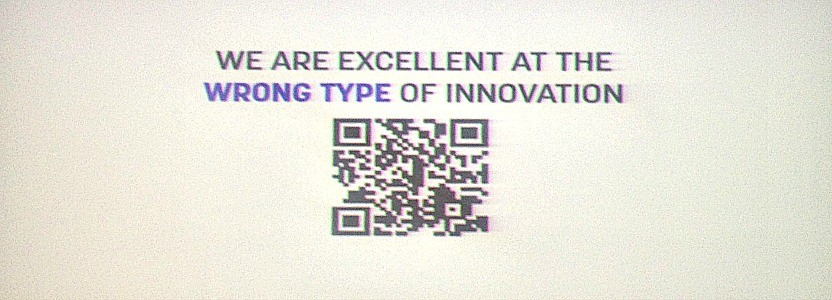I'm not a classic early adopter. I don't queue outside Apple stores every time a plastic cover for the iPad is released, but I latch onto technology fairly quickly. I was online in the late nineties, had one of the first phase of free Spotify accounts and even owned a mini-disc player when portable CD machines were the norm.
So why have I never used a QR code?
For anyone unfamiliar with these things (and this may be part of the problem), the QR code is that odd looking, black and white collection of squares, often spotted on posters and press ads. The reader is invited to scan the pattern with a smart phone, launching a plethora of additional content (videos, websites, games and the like). Sounds intriguing, but as I say, I've never been tempted.
Last year, my colleague Jessica Hazel wrote about QR codes on Creativepool. As well as eloquently outlining the origins of the device, she was suggesting its use would either be as familiar as Google searching or it would soon become a fading curiosity. Technology moves so rapidly that, at the time, the outcome was far from clear - and there was a very real possibility an exciting, multi-media platform was establishing itself. But now the verdict is in and the future for QR codes is far from rosy.
Initially, the statistics are encouraging. The number of print ads containing QR codes grew from below 1% of all print ads in January 2011 to more than 6% of all advertising in December 2011. But increasingly deploying a technology is very different from the system actually having traction with an audience. Remember a couple of years ago when many ads carried a MySpace address?
Advertising agencies like to think of themselves as pioneers, leading the way in the use of new media, but in truth, they are often driven by the anxiety that something very hip and significant is happening and they are being left behind. Therefore there's a tendency to push clients towards any number of contemporary platforms, whether they have genuine potential or not.
Interestingly, many QR codes simply send the user to the advertiser's homepage - just as a simple URL would. This is very revealing. The client and the agency obviously like the idea of the coded squares appearing on the work (believing it lends the campaign a cutting-edge feel), but are at a loss as to what to do next. For many, the QR code is window dressing rather than a real attempt at creative interactivity.
What’s more, the technology itself is fundamentally flawed. To adapt a smart phone to work with QR codes, it is necessary to download an app. Immediately we’re in a situation whereby the audience must work to receive the message – always a terrible idea. Imagine asking TV viewers to re-tune their sets in order to see the commercial breaks.
We went through a similar distraction with Bluetooth advertising. A few years ago a firm came to see me to demonstrate a Bluetooth transmitter. The box could be placed in a key location (a train station, for instance) and beam messages to the phones of the passing public. It appeared to be a superb piece of kit until, after a few searching questions, I discovered that very few people have Bluetooth activated on their handsets as it quickly drains the battery and attracts unwelcome strangers. What seemed to be a wonderful new advertising method collapsed because it asked too much of the audience. And so it is with QR codes.
In recent weeks, I’ve seen some absolutely stunning ‘augmented reality’ applications for smart phones (view your environment through your handset’s camera and see the world tagged with useful information). This would appear to knock QR codes into a cocked hat. But that isn’t guaranteed. If AR is going to succeed as a marketing tool, it is essential the user has easy and ready access to the technology, and the resulting experience must be surprising and compelling.
Otherwise we’ll be burying AR in the plot next to QR.
Magnus Shaw - writer, blogger and broadcaster
www.magnusshaw.co.uk
www.creativepool.co.uk/magnusshaw





